One of Mossad’s most daring operations was the creation of a diving resort to rescue thousands of Ethiopian Jews and bring them to Israel. Raffi Berg talked to James Sorene about his new book about the operation, Red Sea Spies: The True Story of Mossad’s Fake Diving Resort, and about the underappreciated efforts of the Ethiopians themselves in securing their own liberation. You can purchase the book here.
James Sorene: How did you uncover this story and when did that occur?
Raffi Berg: Well, like all the best stories it was something I stumbled across. It was a few years ago when I read that a feature film was being planned about an operation to smuggle Ethiopian Jews out of Sudan using a holiday resort. Over the years I’d read smatterings about this, fragments here or there, but it was the news that this film was being planned that really reignited my interest in the story. For personal rather than professional reasons I then went away to begin researching the story and, quite frankly, what I found just blew me away.
JS: When did this process begin?
RB: I first noticed this in 2015, but it was not until 2018 that I decided this story would make an interesting feature. I proposed it to my editor at the BBC News website and he was interested in the idea. I then travelled to Israel to complete a separate piece of work, but in parallel I wrote the feature and interviewed a couple of former Mossad agents whilst I was over there. These agents filled me in on certain bits and pieces; I put the story together and published the piece on the BBC Website with the exotic headline: The Holiday Village Run by Spies. The response was unbelievable: to date, more than 5.5 million people have read the piece. If a story does well, usually a piece on the BBC website will attract a million readers.
JS: Let’s break down the story. It’s not just about the Mossad operation and the Israelis. Tell us about the Ethiopian Jews themselves and their desire to get to Israel.
RB: When I started this enterprise I knew very little about the Ethiopian Jews. I’d heard of Operation Moses and I could probably tell you a thing or two about it, but when I researched the book and I started to learn about the Ethiopian Jewish community I learned what a special community it is. They have existed for centuries, driven by an ancestral longing to return to the lands of their forefathers, which they did not call the land of Israel but rather ‘the land of Jerusalem’. They expected that the day would come when they would leave Ethiopia and return to Israel. But after the State of Israel was founded in 1948, these communities were not even recognised by the Rabbinical establishment or the State of Israel as ‘proper Jews’. That only changed in 1977 and the election of Begin, when a lot of things were turned on their heads. Begin gave the order to the head of the Mossad to ‘bring me the Jews of Ethiopia’, and that is when the entire story began .
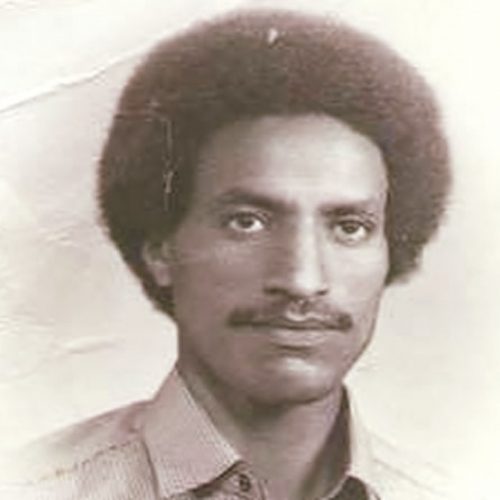 Ferede Aklum, who helped coordinate the evacuation of thousands of Ethiopian Jews to Israel. Photograph courtesy of Raffi Berg.
Ferede Aklum, who helped coordinate the evacuation of thousands of Ethiopian Jews to Israel. Photograph courtesy of Raffi Berg.
JS: The sheer hardship of trekking across Ethiopia demonstrates these communities were not ‘rescued’, would you agree? Were the Ethiopian Jews agents of their own fate?
RB: You’re right, and you raise an extremely important point, which I stress in the book. It is a common misperception that the Ethiopian Jews were ‘rescued’ by the Mossad. Even the Mossad themselves don’t like that terminology, and Ethiopian Jews themselves do not like this term either. There is a very good reason for this, and that is the fact that these communities were indeed agents of their own fate. The Ethiopian Jews were the group that went on this tremendous odyssey, on foot, from Ethiopia across the border into Sudan, and it was a hellish journey. As you say, they climbed over mountains, through deserts and jungles and across rivers, with very little provisions. About 16,000 Ethiopian Jews made the journey, and around 1,500 did not make it to Sudan.
JS: The next stage is when the Mossad begins the prioritise getting these groups out. What did this figure named ‘Dani’ bring to the table?
RB: Dani is an individual I now know very well; I would certainly count him as a very close friend. When I first met him, I did not really know who I was dealing with. It was only after we had met a number of times and I really listened to what he had to say that I began to realise that I was sat across the table from a Mossad legend. He’s incredibly modest, he’s very bright and he’s mesmerising. We first met in the departure terminal of Charles de Gaulle airport, which sounds very cloak and dagger, but he wanted to check me out and would not speak to me over the phone. I discussed with him the prospect of writing a book, and he responded to me after a couple of weeks and said he had taken advice, taken the time to think about it, and that he was ready to document what had really happened. He had worked as a consultant on the Netflix film, Red Sea Diving Resort. Dani felt that if it was left solely to that film, the truth would not be known. In fairness to the film, it does not claim to be the real story: it goes out of its way to say it is ‘inspired by real events’, which gives it creative license.
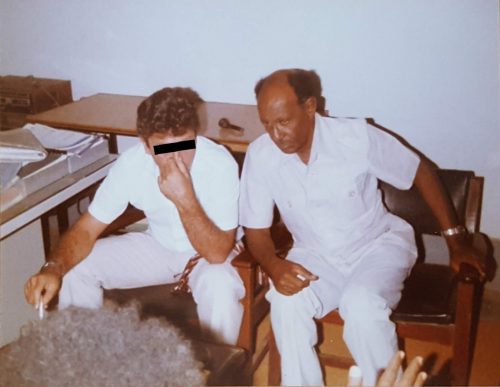 Senior Mossad commander, ‘Dani’, seated with tourists staying at the Arous Diving Resort. Photograph courtesy of Raffi Berg.
Senior Mossad commander, ‘Dani’, seated with tourists staying at the Arous Diving Resort. Photograph courtesy of Raffi Berg.
JS: Can you tell us a bit about how the Mossad jumped from using fake passports to deciding they needed a fulltime base on the Red Sea to conduct operations?
RB: To begin with, small numbers of Ethiopian Jews were being smuggled out of Khartoum Airport and they were being passed off as non-Jewish refugees. As the number of Ethiopian Jews began to increase quite drastically, Dani had to conceive of ways in which he could scale up the operation. He suggested moving from the airport to using the Israeli Navy, wherein the Ethiopian Jews could be transported from Sudan’s coastline. When he was trying to identify sites for a suitable landing bay, Dani stumbled across this abandoned diving resort. Therein is the genius of Dani: he identified the resort as a site which, if the Mossad could get hold of it and turn it into a Club-Med style resort, it could be used as a legitimate base for operatives to live and work at in the daytime and carry out ‘people smuggling’ operations at night.
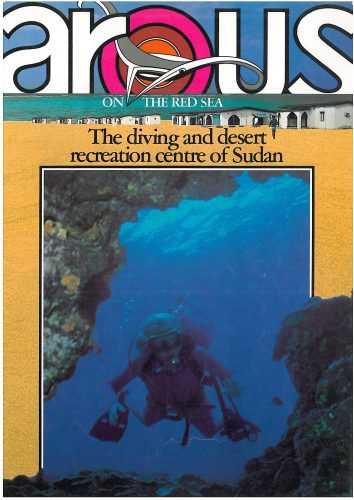 A travel brochure promoting the Arous Diving Resort. Photograph courtesy of Raffi Berg.
A travel brochure promoting the Arous Diving Resort. Photograph courtesy of Raffi Berg.
JS: For all intents and purpose the resort was a pretty incredible place to stay?
RB: It does sound that way, yes. I spoke to former guests who stayed at the time, and they had no idea that diving instructors and managers were Mossad agents. However, more than one person did say to me that, looking back, it was unusual that there were so many well-toned and athletic staff present in low season when there were very few guests staying at the resort. The resort was also a very isolated place, stuck on a peninsula with no proper infrastructure to the area and by all logic it shouldn’t have succeeded.
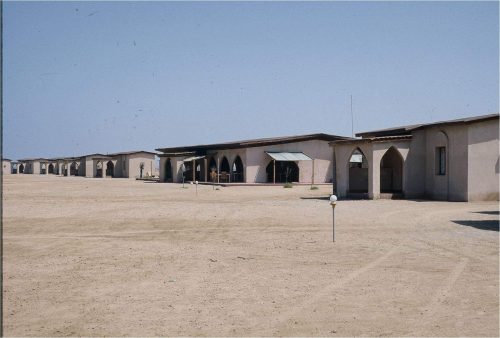 Chalet wings at the isolated Arous resort, pictured in the early 1980s. Photograph courtesy of Raffi Berg.
Chalet wings at the isolated Arous resort, pictured in the early 1980s. Photograph courtesy of Raffi Berg.
JS: You implied in the book that the Mossad didn’t lose any money?
RB: That’s right. As a holiday enterprise it was a great success. The Mossad published glossy brochures advertising it and these were placed in diving centres and travel agencies all over Europe. The resort eventually attracted interest from around the world. Not just ordinary people stayed there but also top diplomats, including Western ambassadors and those from places like Iraq and Sudan, completely unaware that they were chatting to and staying with Mossad agents.
JS: What’s happening there now?
RB: Once the Mossad had pulled out, the Sudanese authorities requisitioned the site and used it as a military garrison. One of the remarkable things I also uncovered was that one of the people who lived there was Osama Bin Laden, after he was expelled from Saudi Arabia in 1991.
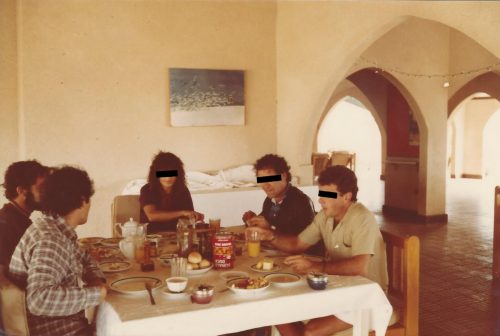 Mossad agents pictured eating breakfast with guests of the Arous resort. Photograph courtesy of Raffi Berg.
Mossad agents pictured eating breakfast with guests of the Arous resort. Photograph courtesy of Raffi Berg.
JS: When I was reading the book, I looked up the resort on Google maps and somebody had posted some of the original pictures from the time and some of the captions say ‘Cosy, good for kids’. Can you give us some of the insight into what you uncovered from the Israeli military operation ?
RB: I must say that this was a Mossad-led operation in its entirety – there has been nothing like it since, at least nothing in the public domain. It began with Mossad agents transporting Jews from camps in Khartoum and elsewhere through the airport. When it was decided to scale up the operation, they shifted to maritime evacuation that involved an Israeli mothership, called Bat Galim, which sailed from Eilat to the coast of Sudan. Once there, Israeli Navy Seals would be dispatched in Zodiac dinghys and rendezvous with the Mossad agents on the shores, pick up the Ethiopian Jews and sail back to Israel. I spoke to the commander of the Israeli ship. One story he told me was that one young Ethiopian Jewish girl was diagnosed with meningitis, so the Air Force decided to send a helicopter to airlift her back to Israel. Before it got to the ship, the girl had made a sufficient recovery that the Air Force called off the airlift, but it just goes to show the extent to which the Israeli forces went in order to look after these people. We have seen operations of a covert nature done by Israel since. But in my mind only the rescue of hostages at Entebbe compares to anything like this in terms of Israel pulling off the impossible.
JS: And the operation extended to flying in very large planes, including the Hercules, below the radar and sometimes without lights in order to land in Sudan?
RB: Yes, as you say they flew without lights which is extraordinarily difficult to do at the best of times, but they flew so low to go undetected and they also had to navigate the Red Sea Hill mountain chain and land on rudimentary strips in the desert. And we have to remember that we’re talking about the Jews of Ethiopia who in some cases hadn’t seen a motorcar let alone a Hercules aircraft. So suddenly they had to go from their villages and walk into the belly of a Hercules C-130 aircraft. One described it as like being the Prophet Jonah in the belly of a whale, others spoke of an alien craft landing.
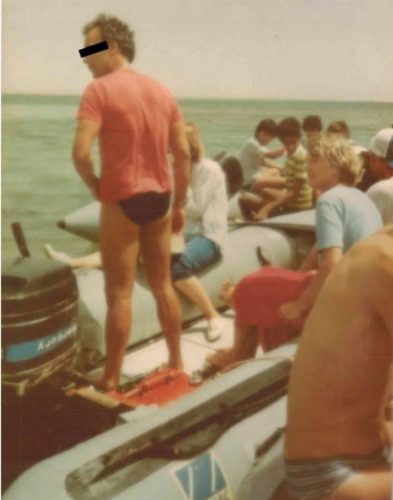 Mossad agents pictured on board a boat with tourists staying at the Arous resort. Photograph courtesy of Raffi Berg.
Mossad agents pictured on board a boat with tourists staying at the Arous resort. Photograph courtesy of Raffi Berg.
JS: In terms of the process, how long does it take to write a book so detailed on an event not reported much?
RB: I had a tight deadline to deliver the book, so you end up doing a lot of planning and other things simultaneously. I went on several trips to Israel and carried out tens of hours of interviews with many of the figures from the operation, including Efraim Halevy, who at the time was the head of the division in the Mossad that led the operation. He would later go on to become the head of the Mossad. I also spoke to sailors, the pilots and the Ethiopian Jews themselves. It was the first time they had told the story in full. People spoke to me both on and off the record, but because of the reputation that Dani had, I was able to speak to people who even to this day still live in the shadows.



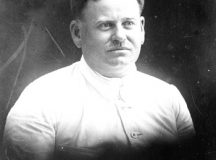
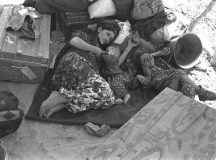
































Comments are closed.